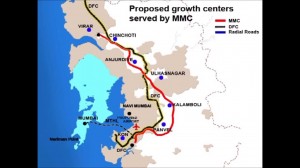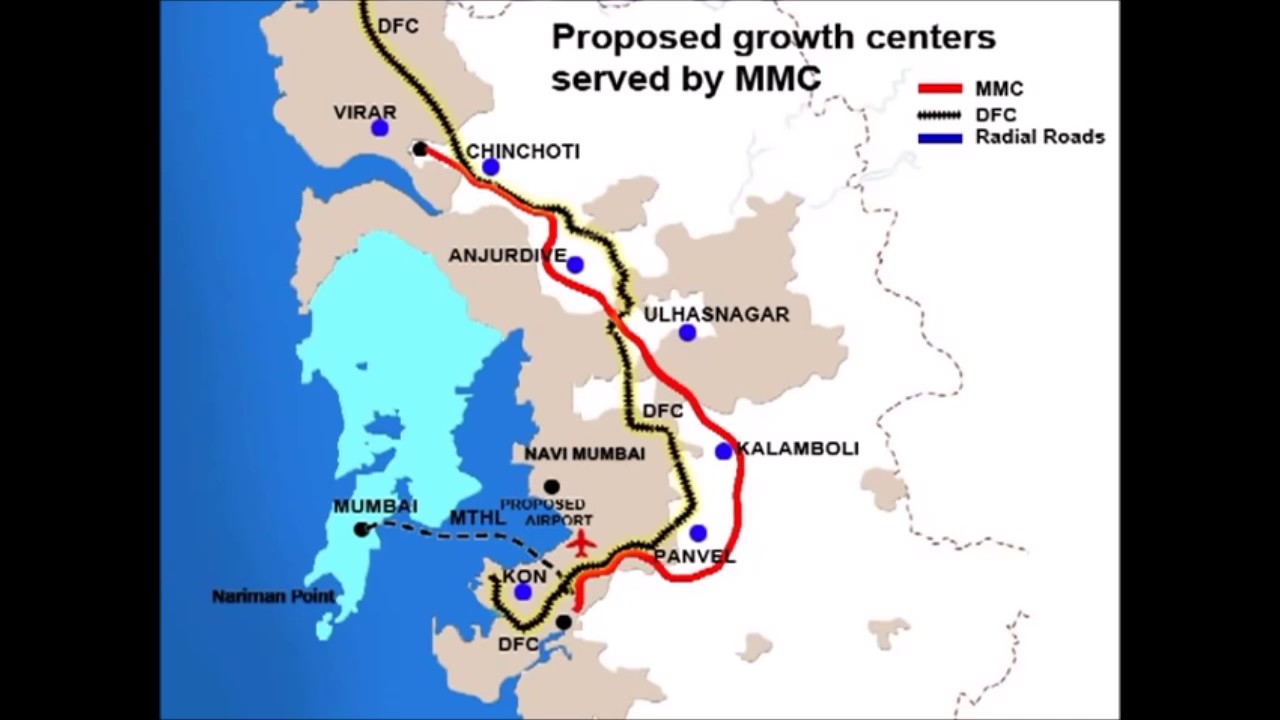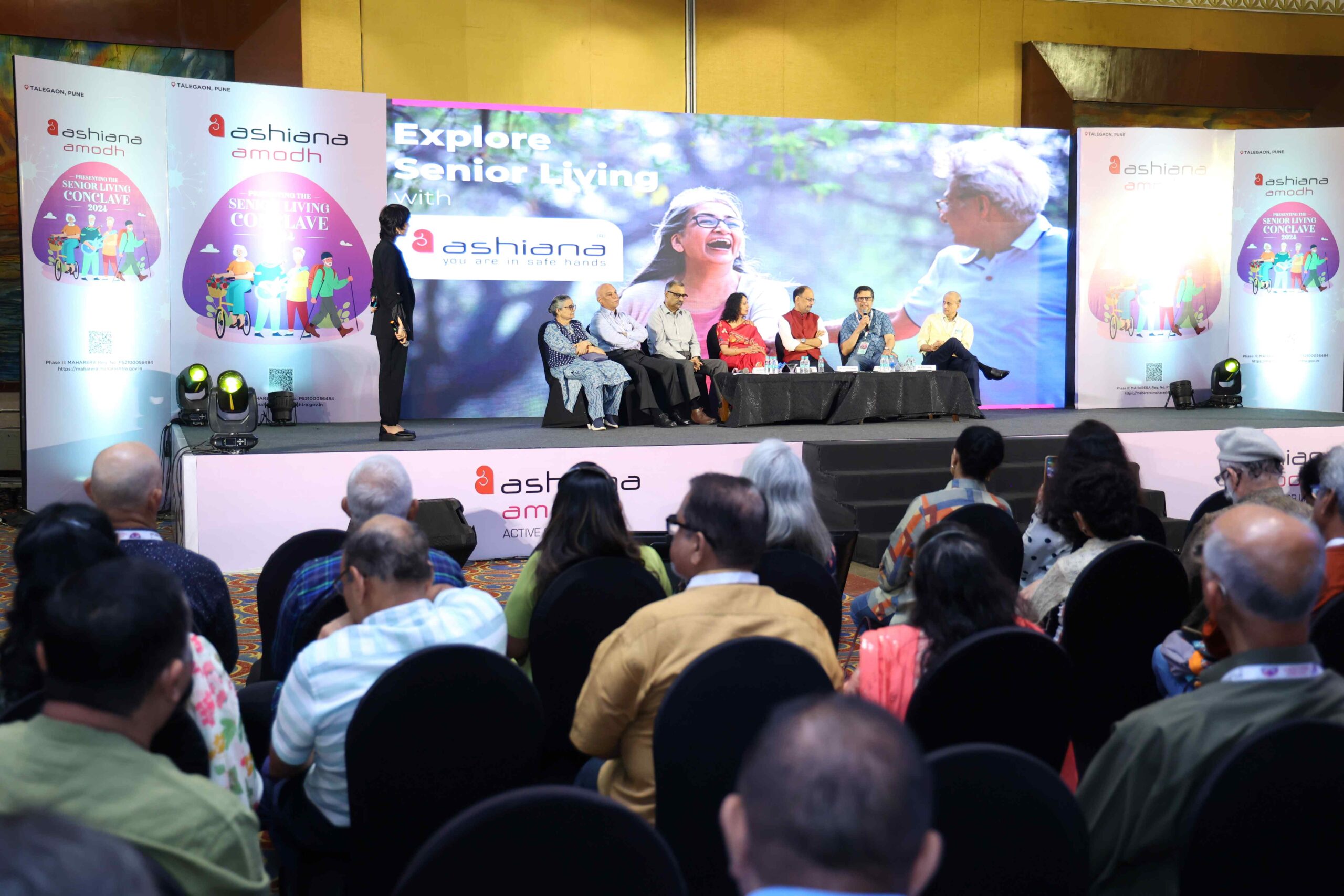Bottom Line: Alibaug – Virar Corridor is probably a classic case study as to how a grand vision to transform urban infrastructure can be jeopardised with the slow pace of execution.
 Forget execution! The planning itself seems to stretch the possible execution timelines for the project. Added to that, some changes mid-way due to logistical reasons and land acquisitions hurdles threaten to prolong the project even further.
Forget execution! The planning itself seems to stretch the possible execution timelines for the project. Added to that, some changes mid-way due to logistical reasons and land acquisitions hurdles threaten to prolong the project even further.
This 126 km long Virar – Alibaug Multi Modal Corridor will connect NH-8, Bhiwandi bypass, NH-3, NH-4 and NH-4B, Mumbai-Pune Expressway, NH-17, etc. Out of this 126 km corridor, 79 km long Virar (Navghar) to Chirner (JNPT) corridor has been declared financially feasible and has been approved by the Mumbai Metropolitan Regional Development Authority (MMRDA) in March, 2012.
The Government of Maharashtra, with financial assistance from the World Bank and through MMRDA under the Mumbai Urban Transport Project has prepared the Comprehensive Transportation Study (CTS) for the Mumbai Metropolitan Region in the year 2008 known as TRANSFORM (TRANSportation Study for the region of Mumbai).
The premier objective of this study was to identify the travel modes and travel patterns of the residents in the Mumbai Metropolitan Region and recommend long term Comprehensive Transportation Strategy for MMR up to 2031.
The final report was submitted in July, 2008. One of the major recommendations of TRANSFORM is the development of Multi Modal Corridor in MMR to take care of the varied travel demands of the region for the horizon period up to 2031. One such corridor is planned from Virar to Alibag. M/s. Louis Berger Group Inc. was been appointed for the preparation of Techno-Economic and Financial Viability Study which began in August, 2010.
However, problems in acquiring land from locals in Navi Mumbai have forced the MRDA to alter the Virar-Alibaug Multimodal Corridor (VAMC) plan. The Multi Modal Corridor will be a crucial step towards development, strengthening and creating job opportunities in seven growth centers in MMR such as Virar, Bhiwandi, Kalyan, Dombivali, Panvel, Taloja and Uran.
The Corridor will also be useful for the development of Navi Mumbai International Airport, JNPT Port, MTHL and Dedicated Freight Corridor. This Corridor will carry all the traffic from JNPT towards Navi Mumbai and Thane outside the city and will help reduce traffic congestion within the city. The travel time between Virar to Alibaug required today will also be reduced by 50 per cent.
The corridor will join the proposed Vadodara – JNPT Expressway near Matheran, and continue as a single highway for 22km before ending at JNPT. At first, both highways were planned to run parallel for 20km. VAMC would cut through the middle of the Navi Mumbai Airport Influence Notified Area (NAINA), which is being developed by City and Industrial Development Corporation of Maharashtra (CIDCO).
However, authorities later said they cannot construct VAMC through NAINA, not only because of some technical issues, but also because locals were opposed to it. Even as the state government is pushing for a Virar – Alibaug multi-modal corridor that will be instrumental in creating new growth centres outside Mumbai, a key public transport element of metro that will make the project genuinely ‘multi-modal’ has been put on the backburner for now, owing to ridership concerns.
Like with the proposed Sewri-Nhava Sheva Mumbai Trans Harbour Link, the MMRDA is now concentrating on building just the road portion of the multi-modal corridor, keeping the development of a Metro line along the route for a later date.
Ratnesh Shah, a local property agent, points out that the multi-modal corridor will enable expansion of Mumbai as it aims to connect all small satellites around the city. It will not only reduce the travel time but will also open doors to trade developments as it pass through Navi Mumbai, Uran, Alibaug, Thane, Dombivali, Kalyan, Bhiwandi, Ulhasnagar, Mira Road, Bhayandar, Vasai, Nallasopara and Virar to name a few.
“The connectivity of the cities will flourish given that the corridor is deemed to be Mumbai’s largest and will have scope for Bus Rapid Transit Systems (BRTS) that will boost transportation module strongly.
As Mumbai gets more saturated with the influx of a working population, townships surrounding the city prove to be perfect living destinations with commercial development, upcoming infrastructure and affordable residential projects,” says Shah.
Subhankar Mitra, Head – Strategic Consulting (West) JLL India laments the fact that the Alibaug – Virar Corridor is still the planning stage. Getting land to implement the project might pose a challenge in certain stretches of the corridor. “However, if it is implemented in the way it is envisaged, there will be significant boost to the local economy and transportation.”
Abhay Kumar, CMD of Grih Pravesh Buildteck is even more critical when he says that the time for Alibaug – Virar Corridor is now or never. According to him, it is one of those infrastructure projects that can turn the urban landscape of the region. Yet, planning and cost & benefit evaluation is continuing for such a long time. Added to this, issues like land acquisition threaten to derail the very purpose for which the corridor has been envisaged.
“Let us fact it! This is the new growth corridor in the entire MMRDA region. No one would like to deny it. And hence, connecting projects like this should be the top priority. We are just talking about this project for such a long time and I don’t see anything happening on the ground,” says Abhay.
In a nutshell, there is no denying that the development of infrastructure will aid the remote yet budding townships to be better connected and while the growth centres planned in distant suburbs such as Kalyan, Virar and Navi Mumbai, are intended to de-congest Mumbai, the corridor will provide the fastest connectivity between the two ends of the metro region.
The overall infrastructure development has led to a positive trend in the real estate market in the region and the corridor will further give an impetus to the growth prospects of the region. However, the slow pace of execution process is a challenge for the timely completion of the project.





